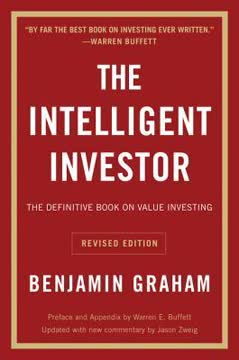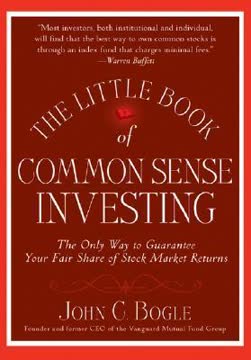Key Takeaways
1. Hedge funds: High-risk, high-reward alternative investments
Hedge funds are the ultimate in today's stock market—the logical extension of the current gun-slinging, go-go cult of success.
Defining hedge funds. Hedge funds are alternative investment vehicles that seek absolute returns by utilizing a wide range of traditional and untraditional investment strategies. They aim to exploit market opportunities while protecting principal, preserving capital, and maximizing returns. Unlike mutual funds, hedge funds:
- Are only available to accredited investors (high net worth individuals and institutions)
- Charge performance fees (typically 20% of profits) in addition to management fees
- Have more flexibility in investment strategies, including short selling and leverage
- Are less regulated by the SEC
Key characteristics. Hedge funds differ from traditional investments in several ways:
- Higher risk and potential returns
- Less liquidity (longer lock-up periods)
- Less transparency in operations and strategies
- More complex investment techniques (e.g., derivatives, short selling)
- Focus on absolute returns rather than relative performance to a benchmark
2. The birth of hedge funds: A.W. Jones's revolutionary strategy
In 1949, the former sociologist and journalist decided to launch the entity A.W. Jones & Co. with four friends.
A.W. Jones's innovation. Alfred Winslow Jones is credited with creating the first hedge fund in 1949. His revolutionary approach included:
- Combining long and short positions to "hedge" market risk
- Using leverage to amplify returns
- Implementing a performance-based fee structure (20% of profits)
Impact on the industry. Jones's strategy set the foundation for modern hedge funds:
- Demonstrated the potential for superior returns (outperformed mutual funds by 87% over a decade)
- Established the basic tenets still used by hedge fund managers today
- Inspired a new generation of investors to explore alternative strategies
The success of Jones's approach led to the proliferation of hedge funds in the 1960s and beyond, transforming the landscape of institutional investing.
3. Hedge fund strategies: Long/short equity, relative value, event-driven, and directional
Hedge funds are able to help stabilize markets and take advantage of persistent asset mispricings and market anomalies because markets are in and of themselves inefficient.
Long/short equity. This strategy involves:
- Taking long positions in undervalued stocks
- Shorting overvalued stocks
- Aiming to profit from both rising and falling markets
Relative value. Key aspects include:
- Exploiting price discrepancies between related securities
- Using arbitrage to profit from temporary market inefficiencies
- Focusing on price relationships rather than absolute price levels
Event-driven. This approach capitalizes on:
- Corporate events such as mergers, acquisitions, and bankruptcies
- Temporary mispricings caused by these events
- Detailed analysis of specific situations and their potential outcomes
Directional. Strategies in this category involve:
- Making leveraged bets on broad market trends
- Using macroeconomic analysis to inform investment decisions
- Employing various financial instruments to express views on market direction
These diverse strategies allow hedge funds to generate returns in various market conditions and exploit inefficiencies across different asset classes.
4. The quest for alpha: Exploiting market inefficiencies
Alpha is the measure of a fund's average performance independent of the market.
Understanding alpha and beta. In the hedge fund world:
- Alpha represents excess returns generated through manager skill
- Beta represents returns attributable to overall market movements
Exploiting inefficiencies. Hedge funds seek alpha by:
- Identifying and capitalizing on market anomalies
- Utilizing superior research and analysis to gain informational advantages
- Employing complex strategies to profit from mispriced securities
Challenges in generating alpha. As markets become more efficient and competition increases:
- Consistent alpha generation becomes more difficult
- Managers must continually innovate and adapt their strategies
- The importance of risk management and diversification grows
The pursuit of alpha drives hedge fund managers to develop unique insights and approaches, contributing to market efficiency while potentially generating superior returns for investors.
5. Manager selection: Due diligence and performance evaluation
In evaluating people, you look for three qualities: integrity, intelligence, and energy. And if you don't have the first, the other two will kill you.
Key factors in manager selection:
- Track record and performance consistency
- Investment strategy and philosophy
- Risk management practices
- Operational infrastructure and compliance
- Team experience and stability
Due diligence process. Thorough evaluation includes:
- Analyzing historical returns and risk metrics
- Conducting on-site visits and interviews
- Reviewing legal and regulatory documents
- Assessing operational processes and controls
- Examining service providers (e.g., prime brokers, auditors)
Ongoing monitoring. Post-investment, it's crucial to:
- Regularly review performance and risk exposures
- Monitor for style drift or changes in strategy
- Stay informed about organizational changes
- Reassess the manager's fit within the overall portfolio
Effective manager selection and ongoing due diligence are critical for successful hedge fund investing, helping to mitigate risks and identify managers with the potential to generate sustainable alpha.
6. Funds of hedge funds: Diversification and professional management
Funds of hedge funds are the ultimate vehicle for investors who want to take advantage of the various benefits of hedge fund investing.
Benefits of funds of hedge funds:
- Diversification across multiple managers and strategies
- Professional due diligence and manager selection
- Access to top-tier funds with high minimum investments
- Ongoing monitoring and portfolio rebalancing
Challenges and considerations:
- Additional layer of fees (typically 1-2% management fee plus 10% performance fee)
- Potential for reduced transparency
- Dilution of returns compared to top-performing individual funds
Investor suitability. Funds of hedge funds are particularly suitable for:
- Smaller investors seeking hedge fund exposure
- Institutions looking for a turnkey hedge fund solution
- Investors lacking resources for comprehensive due diligence
By providing diversification and professional management, funds of hedge funds offer a way for a broader range of investors to access the potential benefits of hedge fund investing while mitigating some of the associated risks.
7. The hedge fund industry: Evolution, challenges, and future prospects
Today, the money that talks the loudest in America belongs to a closely knit, inscrutable group of men who run hedge funds.
Industry growth and evolution:
- Exponential growth in assets under management (from $38.9 billion in 1990 to over $2 trillion in 2011)
- Shift from high-net-worth individuals to institutional investors
- Increased regulation and scrutiny following high-profile failures and the 2008 financial crisis
Challenges facing the industry:
- Pressure on fees and performance
- Increased competition and market efficiency
- Regulatory changes and compliance costs
- Reputational issues and public perception
Future outlook:
- Continued growth, albeit at a slower pace
- Greater institutionalization and professionalization
- Emergence of new strategies and technologies (e.g., AI, big data)
- Focus on transparency and alignment of interests with investors
The hedge fund industry has transformed the investment landscape, offering both opportunities and challenges. As it continues to evolve, adaptability and innovation will be key to success for both managers and investors.
Last updated:
FAQ
What's "The Little Book of Hedge Funds" about?
- Overview: "The Little Book of Hedge Funds" by Anthony Scaramucci provides an insider's guide to the hedge fund industry, demystifying its operations, strategies, and impact on the global market.
- Purpose: The book aims to educate readers on the complexities of hedge funds, offering insights into their history, strategies, and the roles they play in financial markets.
- Audience: It is targeted at both novice investors and those with some financial knowledge who are curious about hedge funds and their potential benefits and risks.
- Structure: The book is structured to gradually build the reader's understanding, starting with basic concepts and moving towards more advanced topics.
Why should I read "The Little Book of Hedge Funds"?
- Comprehensive Insight: The book offers a thorough understanding of hedge funds, from their origins to their current role in the financial world.
- Insider Perspective: Written by Anthony Scaramucci, a seasoned hedge fund manager, it provides firsthand insights and anecdotes from the industry.
- Practical Knowledge: It equips readers with the knowledge to make informed decisions about investing in hedge funds or pursuing a career in the industry.
- Engaging Style: The book uses layman's language and humor to make complex financial concepts accessible and engaging.
What are the key takeaways of "The Little Book of Hedge Funds"?
- Definition and Structure: Hedge funds are alternative investment vehicles that seek absolute returns using diverse strategies, often involving high fees and limited investor access.
- Investment Strategies: The book details various hedge fund strategies, including long/short equity, relative value, event-driven, and directional strategies.
- Risk and Reward: Hedge funds aim to generate high returns but come with significant risks, requiring careful manager selection and due diligence.
- Industry Evolution: The hedge fund industry has evolved significantly, with increasing institutional investment and regulatory scrutiny.
How does Anthony Scaramucci define a hedge fund in the book?
- Alternative Investment Vehicle: A hedge fund is described as an investment pool that seeks absolute returns by exploiting market opportunities while protecting principal.
- Manager Structure: Typically organized as limited partnerships, hedge funds have a general partner who manages the fund and limited partners who invest in it.
- Fee Structure: Hedge funds are known for their "two-and-twenty" fee structure, which includes a management fee and a performance fee.
- Accredited Investors: Access is generally limited to accredited investors, who meet specific financial criteria.
What are the main investment strategies discussed in "The Little Book of Hedge Funds"?
- Long/Short Equity: Involves taking long positions in undervalued stocks and short positions in overvalued ones to hedge market risk.
- Relative Value: Focuses on arbitrage opportunities by exploiting price discrepancies between related securities.
- Event-Driven: Capitalizes on corporate events like mergers, acquisitions, or bankruptcies to generate returns.
- Directional Strategies: These include global macro and managed futures, which bet on market trends and movements.
What is the "two-and-twenty" fee structure mentioned in the book?
- Management Fee: Hedge funds typically charge a management fee of 1-2% of assets under management, covering operational costs.
- Performance Fee: In addition to the management fee, hedge funds charge a performance fee, usually 20% of the profits earned.
- Incentive Alignment: This fee structure is designed to align the interests of the fund manager with those of the investors.
- Criticism: The high fees have been criticized for encouraging excessive risk-taking and for being costly to investors.
How does "The Little Book of Hedge Funds" explain the concept of alpha and beta?
- Alpha Definition: Alpha represents the excess returns a hedge fund generates over a benchmark, attributed to the manager's skill.
- Beta Definition: Beta measures a fund's volatility relative to the market, indicating the level of systematic risk.
- Uncorrelated Returns: Hedge funds aim to achieve alpha by generating returns that are uncorrelated with market movements.
- Volatility and Risk: Understanding alpha and beta helps investors assess the risk and potential reward of hedge fund investments.
What role do hedge funds play in the global market according to the book?
- Market Efficiency: Hedge funds help iron out market inefficiencies by exploiting price discrepancies and anomalies.
- Risk Management: They provide diversification and risk management benefits, especially in volatile markets.
- Institutional Investment: Increasingly, institutions like pension funds and endowments invest in hedge funds for higher returns.
- Economic Impact: Hedge funds can influence market trends and liquidity, impacting the broader financial ecosystem.
What are the best quotes from "The Little Book of Hedge Funds" and what do they mean?
- "The obvious isn’t obvious until it’s obvious." This quote highlights the unpredictable nature of markets and the importance of foresight in investing.
- "Hedge funds are the ultimate in today’s stock market—the logical extension of the current gun-slinging, go-go cult of success." It reflects the high-risk, high-reward nature of hedge funds and their appeal to ambitious investors.
- "In evaluating people, you look for three qualities: integrity, intelligence, and energy." This Warren Buffett quote emphasizes the importance of character and competence in selecting hedge fund managers.
How does the book address the risks associated with hedge fund investing?
- Due Diligence: Emphasizes the importance of thorough due diligence in selecting hedge fund managers to mitigate risks.
- Market Volatility: Hedge funds are subject to market volatility, and their strategies can sometimes amplify risks.
- Managerial Risk: The success of a hedge fund heavily depends on the manager's skill and decision-making.
- Regulatory Changes: The book discusses how regulatory changes can impact hedge fund operations and investor access.
What advice does Anthony Scaramucci give for those looking to work in the hedge fund industry?
- Passion and Perseverance: Scaramucci advises aspiring hedge fund professionals to have a genuine passion for finance and a willingness to work hard.
- Networking: Building a strong network is crucial for gaining insights and opportunities in the industry.
- Continuous Learning: Staying informed about market trends and continuously improving one's skills are essential for success.
- Risk Management: Understanding and managing risk is a key component of working in hedge funds.
What is the future outlook for hedge funds according to "The Little Book of Hedge Funds"?
- Growth Potential: The book suggests that the hedge fund industry will continue to grow, driven by institutional investment and demand for alternative strategies.
- Regulatory Environment: Increased regulation may impact hedge fund operations, but it could also enhance transparency and investor confidence.
- Innovation: Hedge funds are likely to innovate and adapt to changing market conditions, offering new strategies and products.
- Challenges: Despite growth prospects, the industry faces challenges such as fee pressures and competition from other investment vehicles.
Review Summary
The Little Book of Hedge Funds receives mixed reviews, with an average rating of 3.67/5. Readers appreciate its accessible introduction to hedge funds, entertaining writing style, and informative content for beginners. However, some find it too basic for experienced investors. The book is praised for dispelling misconceptions and providing a good overview of the hedge fund industry. Critics note its use of jargon and perceived bias towards justifying high fees. Overall, it's considered a quick, informative read for those new to hedge funds, but may lack depth for more knowledgeable readers.
Similar Books










Download PDF
Download EPUB
.epub digital book format is ideal for reading ebooks on phones, tablets, and e-readers.




